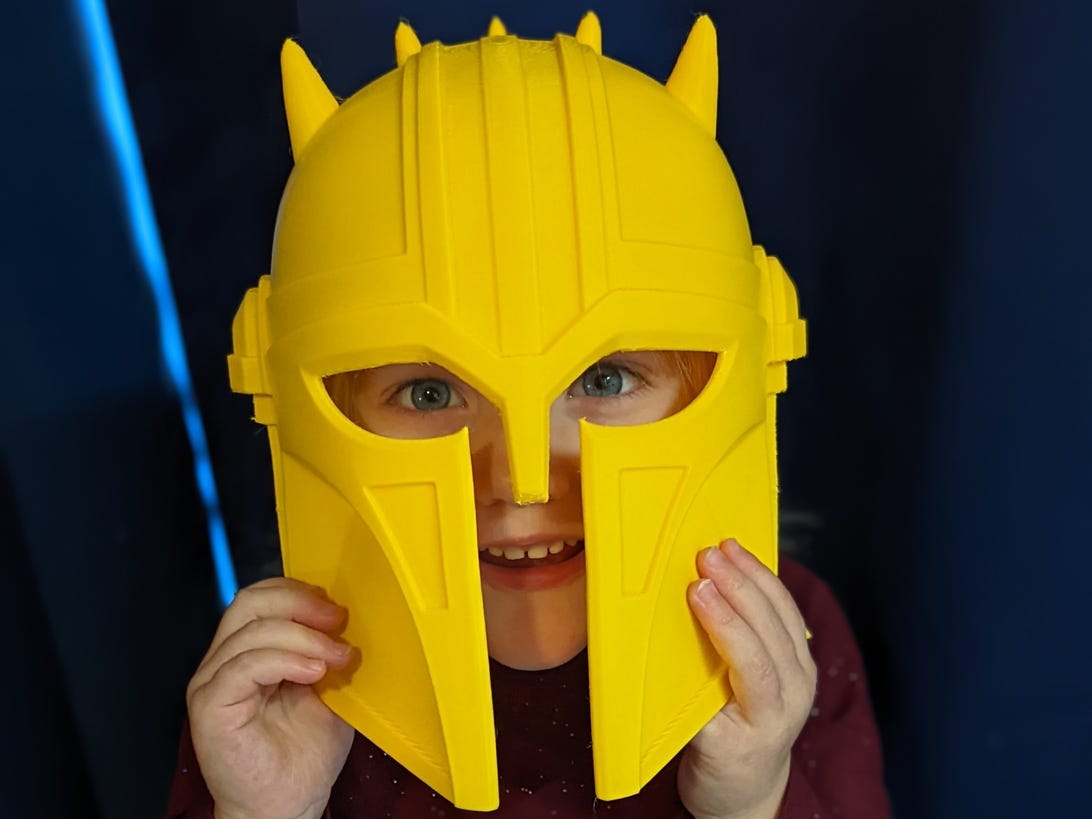This flexible 3D printing material is a cosplayer’s dream

It’s a little big but she looks adorable!
James Bricknell/CNET
Cosplay and 3D printing go hand in hand. At any convention, most of the armor and helmets you see are made from either foam or 3D-printed filament, and a lot of the small delicate work is made on resin 3D printers to keep the details sharp.
Most of the time though, 3D-printed armor is rigid and breakable. I have a Mandalorian helmet I’ve printed in polylactic acid, or PLA, that looks great but it chipped the first time I dropped it on the floor.
Fortunately, there’s a solution. Most 3D prints are made from either PLA or ABS filament. The former is easy to use, but delicate. The latter is harder to print, and similarly rigid, but is much more impact-resistant. Through the joys of TikTok I’ve recently discovered flexible PLA, a specialty filament that combines rubber-like give with the ease-of-use of PLA.
Read more: Best 3D printer for 2022

It prints a lot like PLA, with a cool bouncy texture
James Bricknell/CNET
I’m using a version from a company called Ataraxia Art, which is closer to a material called TPU, or thermoplastic polyurethane, than PLA. TPU is often used to make 3D-printed phone cases, but is sometimes tricky to work with when you’re printing large pieces. It can be done, but the hours of setup make it a time-consuming process.
The big advantage this flexible filament has is it will print with settings very close to that of standard PLA, which is the easiest material to print, and almost all 3D printers are designed to print it. Note that I’ve found, even with similar settings, it’s best to slow your print speed down a little and keep your bed cooler than you would normally.

The PLA version on the right is more likely to break with extended use
James Bricknell/CNET
I asked Ataraxia Art CEO, Jalpa Mistry, about the need for a new type of flexible 3D printing material. “My son had the idea [for] a flexible filament that could print like PLA,” Mistry told me over email. “So we started brainstorming, and after several months of trial and error, we finally came up with our flexible PLA. We made sure the product had incredible properties such as a softer shore hardness of 89A [a measurement of how rigid elastic materials are], a lower print temperature and zero odor.”
I also liked that these filaments are matched to specific Pantone colors, making it easier to get a project exactly right.
Other companies like Paramount 3D make similar sounding products, but the PLA from these other companies is still pretty rigid, just with more give than standard PLA. This is great if you need your rigid prints to bounce if dropped, but not if you need them to flex with your body. Amazon is usually a good source for a wide variety of filaments but keep an eye on prices, which can fluctuate.
After I spent some time figuring out the best flexible PLA settings for my Prusa Mk3 printer I managed to print a fantastic Armorer helm from the Mandalorian for my daughter. It took 28 hours to print, so I’d hate to have to recreate it. She’s three, and, as you can imagine, isn’t particularly careful, but she can throw this version around to her heart’s content with no damage at all.
For all the latest world News Click Here

